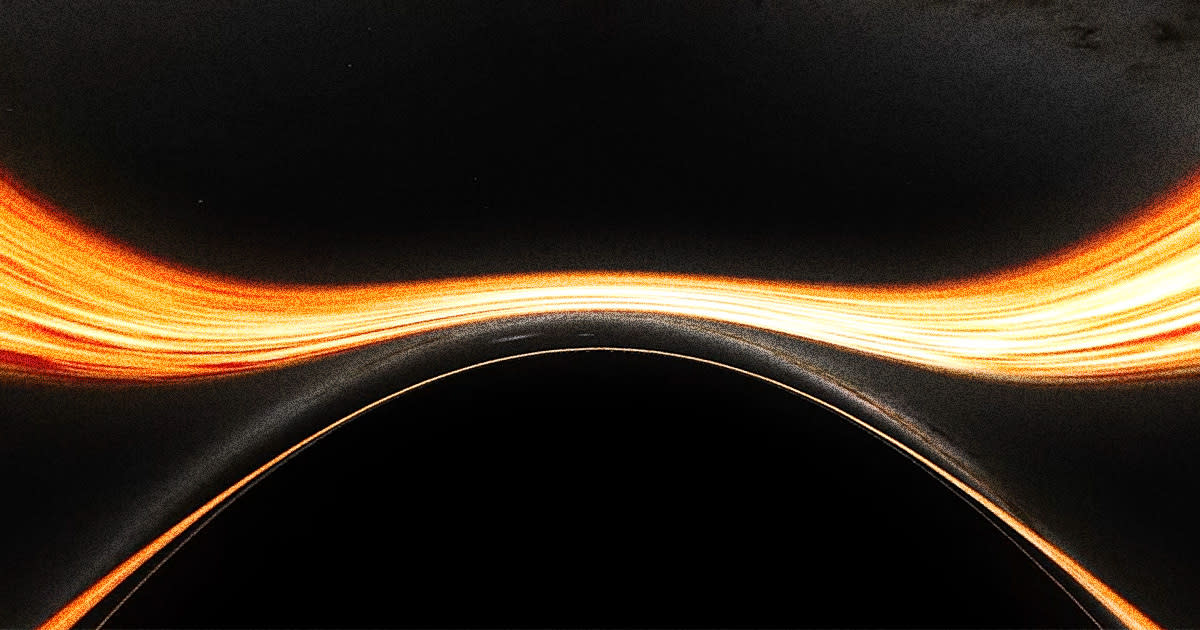NASA Releases Video of What It's Like to Fall Into a Black Hole

Turn of Events
A new NASA simulation takes you to where no human has ever dared to go: into the overpowering embrace of a black hole.
The stunning visualization, available on YouTube in a 360-degree video and as an explainer, shows the reality-warping journey of approaching a supermassive black hole's event horizon, the boundary past which nothing — not even light — returns.
"People often ask about this, and simulating these difficult-to-imagine processes helps me connect the mathematics of relativity to actual consequences in the real universe," Jeremy Schnittman, an astrophysicist at NASA's Goddard Space Flight Center who created the visualizations, said in a NASA release about the video. "So I simulated two different scenarios, one where a camera — a stand-in for a daring astronaut — just misses the event horizon and slingshots back out, and one where it crosses the boundary, sealing its fate."
Strung Out
Black holes are the source of many a cosmic mystery. Most enigmatic of all is what's at their core: a singularity, meaning a one-dimensional point with infinite density that's the source of these objects' awesome power.
There's no real way of knowing what happens behind an event horizon — unless your name is Matthew McConaughey, that is — but their weird gravitational effects outside them offer plenty to marvel at, like a phenomenon called spaghettification. As an object nears an event horizon, the difference in gravity from the leading end of the object to the trailing end can be so extreme that it begins to stretch out into spaghetti-like tubes.
And on that note, the simulations have yielded some practical advice for future astronauts. "If you have the choice, you want to fall into a supermassive black hole," Schnittman said.
"Stellar-mass black holes, which contain up to about 30 solar masses, possess much smaller event horizons and stronger tidal forces, which can rip apart approaching objects before they get to the horizon."
The simulated black hole is designed to imitate the supermassive one at the heart of our galaxy, which has a mass over 4.3 million times that of our Sun. That is almost unfathomably large: the distant view of it you see in the visualizer is from nearly 400 million miles away.
From the point of view of the doomed camera, falling into the event horizon would take three hours. To an outside observer, however, the camera would appear to freeze just before the threshold due to immense distortions in spacetime.
But however it appears, the camera's fate is surely sealed.
"Once the camera crosses the horizon, its destruction by spaghettification is just 12.8 seconds away," Schnittman said. According to NASA, at that point there's only 79,500 miles to the singularity, a journey that's completed in an instant.
More on black holes: Scientists Surprised to Realize Red Dots in James Webb Images Are Black Holes
Solve the daily Crossword

